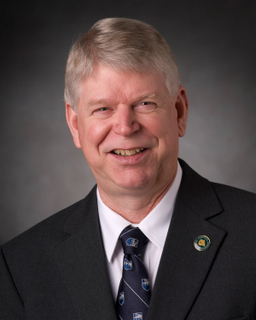SuperDARN HF Log Periodic Array at the South Pole
#SuperDARN
#HF
#Antenna
#South
#Pole
SuperDARN is a network of some 35 high-frequency (HF) Doppler radars located in the high-latitude and midlatitude regions of the northern and southern hemispheres. The radars detect backscatter from ionospheric electron density irregularities and deduce various parameters. This lecturer will discuss the replacement of the present array consisting of 20 HF horizontal log periodic antennas at the South Pole. These current log periodic antennas cover a frequency range of 8 to 20 MHz and maximize radiation in takeoff angles from 5 to 35 degrees.
Date and Time
Location
Hosts
Registration
-
 Add Event to Calendar
Add Event to Calendar
-
201 McLean Blvd.Synergy Microwave Corporation
-
Paterson, New Jersey
-
United States
07504

- Starts
30 September 2023 02:00 PM UTC
- Ends
03 October 2023 09:00 PM UTC
- No Admission Charge
Speakers
Topic:
SuperDARN HF Log Periodic Array at the South Pole
The present antennas have backlobes in the same takeoff angular sector only down 10 to 15 dB from the front main beam. It is desirable to have a much higher rejection of the back lobes (more than 25 dB) that will be shown as possible with new design methods. Furthermore, the new design will incorporate crossed-diagonal dipole elements to provide polarization measurements that are not found in any of the other SuperDARN systems around the world. The log periodic dipole elements will be formed from wires supported by insulated catenary cables and a system of support towers. Extensive modeling results are shown using FEKO antenna software for antenna performance characteristics of VSWR, gain, radiation patterns, polarization, etc.
Biography:
Dr. James K. Breakall received B.S. and M.S. degrees in Electrical Engineering from Penn State University and a Ph.D. in Electrical Engineering and Applied Physics from Case Western Reserve University, Cleveland, OH, and has over 45 years of experience in numerical electromagnetics and antennas. He was a Project Engineer at the Lawrence Livermore National Laboratory (LLNL), Livermore, CA, and an Associate Professor at the Naval Postgraduate School (NPGS), Monterey, CA. Presently he is a Full Professor of Electrical Engineering at Penn State. Dr. Breakall began his career as a graduate student at the Arecibo Observatory in Puerto Rico working on antenna analysis and radar probing of the ionosphere. At LLNL, he and his group worked on the development of the Numerical Electromagnetics Code (NEC), the first
sophisticated antenna modeling program. Other significant projects that he has worked on were the designs of the HAARP facility in Alaska, both HF facilities at Arecibo, and the Kinstar low-profile AM broadcast antenna. He (electrical) and Tim Duffy (mechanical) designed the very
popular Ham Radio Skyhawk Yagi antenna, and he is the inventor of the Optimized Wideband Antenna (OWA). Dr. Breakall is also a life senior member of the IEEE Antennas and Propagation Society, IEEE Broadcast Technology Society, Eta Kappa Nu, International Union of Radio Science Commission B, IEEE Wave Propagation and Standards Committee, and has been Associate Editor for the Radio Science journal, and served as an Arecibo Observatory Users and Scientific Advising Committee Member. He has graduated numerous graduate students and
received many awards over the years. In 2017, Dr. Breakall was awarded the prestigious Sarnoff Citation from the Radio Club of America (RCA). He was elected as a Director to the Board in 2018 and 2021 and the Chairman of the 2021 and 2022 Technical Symposium. He also serves on the RCA Scholarship and Educational Committees.
on the RCA Scholarship and Educational Committees.
Email:
Address:Professor, Electrical Engineering , 225 Electrical Engineering East Penn State University , University Park, Pennsylvania, United States, 16802
Dr. Georg Karawas
Topic:
Three best known Circuit Charts for Microwave Measurement: Carte, Smith, and Buschbeck and the relations among them
This talk will discuss the three best-known Circuit Charts that were invented for the graphical calculation of Microwave measurements, Smith, Carter, and Buschbeck, and the relations among them.
The speaker will also discuss Measurement techniques of Electromagnetic Interference (EMI) and some incorrect procedures that frequently occur as well as the Automation processes that were introduced using the Linux operating system, drawing parallels to similar measurements performed at the corresponding laboratory of the German Army (Bundeswehr) in Greding, Bavaria.
Biography:
Georg Karawas studied at the Technical University of Aachen (RWTH) Germany, obtaining a Dipl. Ing. degree in Communications Engineering (Nachrichtentechnik). Subsequently, he worked as an Electronics Engineer at the Greek Nuclear Research Center "Demokritos", while serving in the Greek Army, designing low-frequency tube amplifiers for one of the Greek Astronomical Observatories.
Georg came to the United States and obtained a Ph.D. in Electromagnetic Theory and Antennas under Robert Collin, resolving the dispute of the alleged "error" of Sommerfeld, proving that Sommerfeld was correct. He subsequently taught Circuit courses at Case Western Reserve University and redesigned the Circuits Lab experiments.
Georg joined AT&T Bell Laboratories and led the team (VMS) that introduced computerized Voice Messaging Service prior to the introduction of Answering Machines. He also led the team that prototyped Video Telephony, using TV sets and Camcorders over Cable-TV, before the Internet. His Team convinced AT&T Management to get involved in the Internet and introduce the so-called "Worldnet" dial-up service, back then the world's largest, now defunct.
Georg joined (S&TCD) the Space and Terrestrial Communications Directorate of the US Army in Fort Monmouth, NJ, and later in Aberdeen Proving Ground Maryland. He was instrumental in automating Data Collection and Computerized Evaluation of High Frequency and Microwave Measurements.
Email:
Agenda
4:45 PM - Refreshments and Networking
5:00 PM-7:00 PM: Talk by Prof. James K. Break all, Penn State University, University Park, PA 16802
You do not have to be an IEEE Member to attend. Refreshment is free for all attendees. Please invite your friends and colleagues to take advantage of these Invited Lectures.
Co-sponsor by IEEE North Jersey Section
 Add Event to Calendar
Add Event to Calendar
 Prof. James K. Breakall of Penn State University
Prof. James K. Breakall of Penn State University
